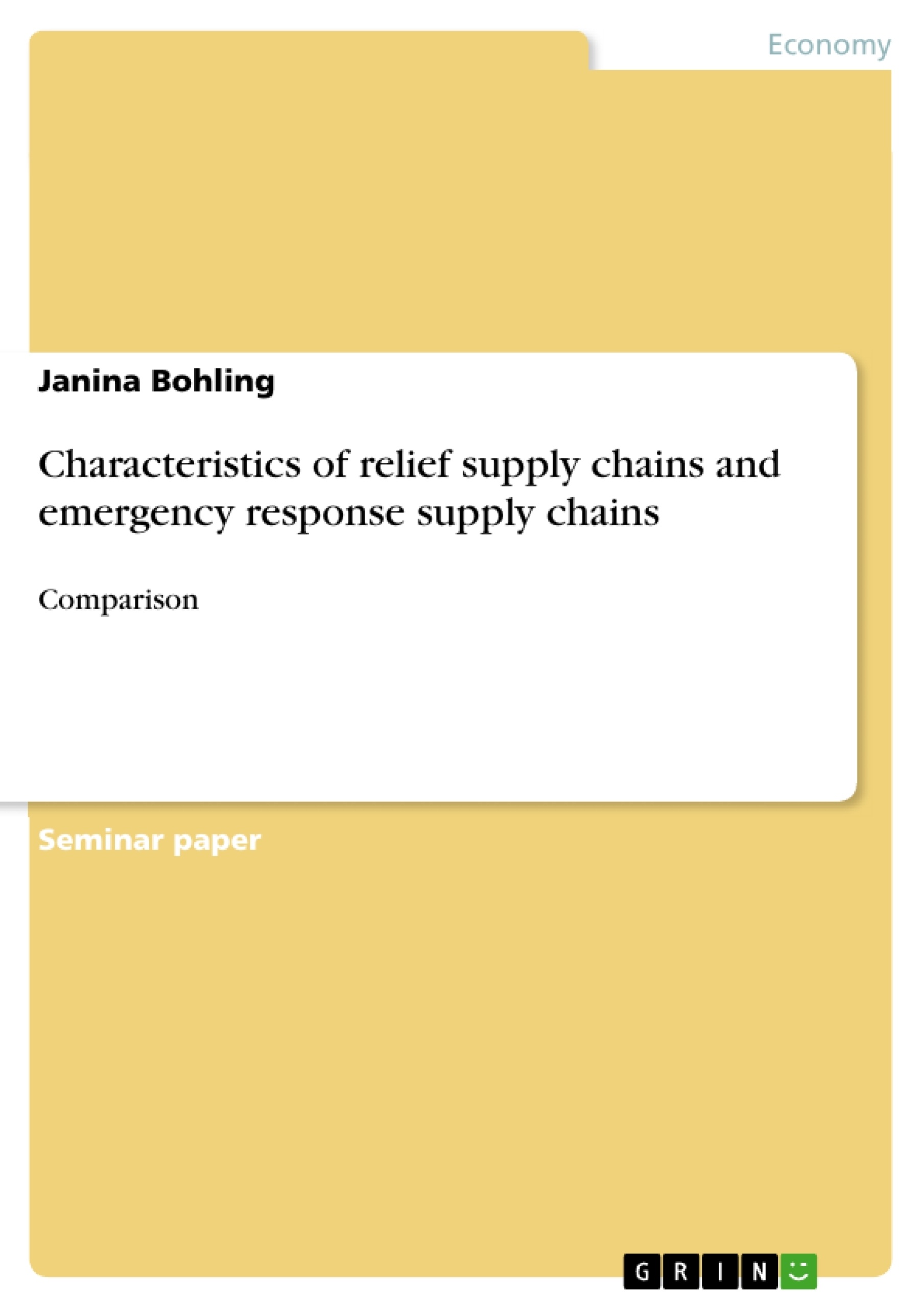This report compares and contrasts relief SCs providing long-term aid and emergency response SCs that are used in the initial stages of large, sudden-onset disasters. The report will be divided into three parts: introduction to humanitarian logistics, the importance of aid agencies as well as a comparison of both SC types.
Inhaltsverzeichnis (Table of Contents)
- Introduction
- Humanitarian Logistics
- Importance of aid agencies in Humanitarian Logistics
- Supply chain types in Humanitarian Logistics
- Disaster relief
- Continuous aid work
- Conclusion
Zielsetzung und Themenschwerpunkte (Objectives and Key Themes)
This report aims to compare and contrast the characteristics of relief supply chains that provide long-term aid and emergency response supply chains used in the initial stages of large, sudden-onset disasters. The report examines the role of humanitarian logistics in disaster relief operations and the importance of aid agencies in this context.
- The increasing complexity and interconnectedness of supply chains due to globalization and their vulnerability to natural disasters.
- The importance of humanitarian logistics in disaster relief operations and the growing need for efficient and effective aid delivery.
- The diverse range of actors involved in humanitarian aid networks and the need for coordination and collaboration.
- The different types of supply chains in humanitarian logistics, specifically focusing on disaster relief and continuous aid work.
- The role of aid agencies in humanitarian logistics, their principles of operation, and their contribution to disaster relief efforts.
Zusammenfassung der Kapitel (Chapter Summaries)
Chapter 1: Introduction: This chapter introduces the report's focus on comparing and contrasting relief supply chains and emergency response supply chains. It highlights the growing importance of humanitarian logistics in light of increasing disaster frequency and severity, emphasizing the need for effective aid delivery.
Chapter 2: Humanitarian Logistics: This chapter provides a definition of humanitarian logistics and explains its complexity. It discusses the various actors involved in the humanitarian aid network and the importance of defining disaster types (sudden-onset vs. slow-onset, natural vs. man-made) for effective response.
Chapter 3: Importance of aid agencies in Humanitarian Logistics: This chapter explores the crucial role of aid agencies in humanitarian logistics. It discusses the various types of agencies, their sources of funding, and their contribution to disaster relief efforts. The chapter also highlights the increasing importance of aid agencies and their adherence to principles of humanity, impartiality, and neutrality.
Schlüsselwörter (Keywords)
This report focuses on humanitarian logistics, disaster relief, supply chains, aid agencies, emergency response, relief operations, and the importance of efficient and effective aid delivery. It also discusses the principles of humanity, impartiality, and neutrality in humanitarian operations and the challenges of managing complex and dynamic supply chains in disaster contexts.
- Quote paper
- Janina Bohling (Author), 2014, Characteristics of relief supply chains and emergency response supply chains, Munich, GRIN Verlag, https://www.grin.com/document/270701



